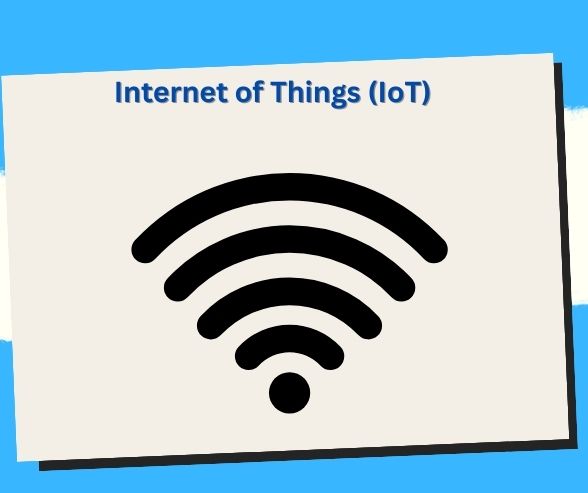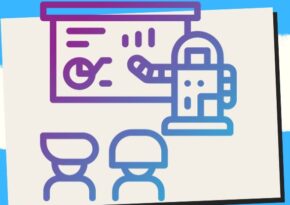
Boosting Connectivity: Implementing 5G for Lightning-Fast Mobile Broadband
Discover how to revolutionize your network with 5G technology for lightning-fast mobile broadband speeds.
Unleashing the Power of 5G: Guide to Implementing Enhanced Mobile Broadband 📶
Welcome to the era of 5G, where lightning-fast speeds and unprecedented connectivity are revolutionizing the way we use mobile broadband. In this guide, we’ll delve into the essentials of implementing 5G for enhanced mobile broadband, providing you with the knowledge and tips you need to harness its full potential.
Section 1: Understanding the Basics of 5G
In this section, we’ll cover the fundamental concepts behind 5G technology, including its key features and advantages over previous generations.
1.1 What is 5G?
5G, or the fifth generation of mobile networks, represents a significant leap forward in wireless communication technology. It promises faster speeds, lower latency, and increased capacity, enabling a wide range of applications from augmented reality to autonomous vehicles.
1.2 Key Features of 5G
- Enhanced Speeds: With peak speeds reaching up to 20 gigabits per second, 5G offers unparalleled download and upload speeds, making activities like streaming 4K video or downloading large files a breeze.
- Ultra-Low Latency: Latency, or the time it takes for data to travel from one point to another, is dramatically reduced with 5G, enabling real-time communication and responsive applications.
- Massive Connectivity: 5G networks can support a significantly higher number of connected devices per square kilometer compared to previous generations, paving the way for the Internet of Things (IoT) and smart city applications.
Section 2: Planning Your 5G Deployment Strategy
Implementing 5G requires careful planning and consideration of various factors, from network architecture to spectrum allocation.
2.1 Assessing Coverage and Capacity Requirements
Before deploying 5G, assess the coverage and capacity requirements of your target area. Consider factors such as population density, traffic patterns, and anticipated usage to determine the number and placement of base stations.
2.2 Network Architecture Options
There are different architectural approaches to deploying 5G, including Non-Standalone (NSA) and Standalone (SA) architectures. NSA utilizes existing 4G infrastructure for control functions, while SA operates independently, offering greater flexibility and efficiency.
2.3 Spectrum Allocation
Spectrum allocation plays a crucial role in 5G deployment, as it determines the available bandwidth for transmitting data. Work with regulatory bodies to secure the necessary spectrum licenses and ensure sufficient bandwidth for your network.
Section 3: Implementing 5G Infrastructure
In this section, we’ll explore the practical steps involved in deploying 5G infrastructure, from installing base stations to optimizing network performance.
3.1 Installing Base Stations
Base stations are the backbone of 5G networks, transmitting and receiving signals to provide coverage to users. Install base stations strategically to ensure optimal coverage and minimize signal interference.
3.2 Fiber Optic Backhaul
Fiber optic backhaul is essential for supporting the high data rates of 5G networks. Deploy fiber optic cables to connect base stations to the core network, ensuring fast and reliable data transmission.
3.3 Small Cell Deployment
Small cells are compact base stations that enhance coverage and capacity in densely populated areas. Deploy small cells strategically, focusing on high-traffic areas such as urban centers, stadiums, and transportation hubs.
Section 4: Optimizing 5G Performance
Maximizing the performance of your 5G network requires ongoing monitoring and optimization. In this section, we’ll share tips for optimizing network performance and ensuring a seamless user experience.
4.1 Network Slicing
Network slicing allows operators to partition their network into multiple virtual networks, each optimized for specific applications or user groups. Utilize network slicing to prioritize bandwidth for mission-critical services and applications.
4.2 Edge Computing
Edge computing brings computing resources closer to the end-user, reducing latency and improving responsiveness for latency-sensitive applications. Deploy edge computing infrastructure at the network edge to enhance the performance of 5G applications.
4.3 Continuous Monitoring and Optimization
Monitor key performance indicators (KPIs) such as latency, throughput, and signal strength to identify potential issues and optimize network performance. Implement automated tools and algorithms to dynamically adjust network parameters and ensure optimal performance.
Benefits of Implementing 5G for Enhanced Mobile Broadband
- Blazing Fast Speeds: With 5G, users can experience download and upload speeds that surpass those of traditional broadband connections, enabling seamless streaming, gaming, and large file transfers.
- Low Latency: Reduced latency ensures near-instantaneous responsiveness, critical for applications like online gaming, video conferencing, and real-time IoT communication.
- Increased Capacity: 5G networks can support a significantly higher number of connected devices per unit area, catering to the exponential growth of IoT devices and ensuring consistent performance even in densely populated areas.
- Enhanced User Experience: The combination of high speeds, low latency, and increased capacity translates to an unparalleled user experience, enabling immersive AR/VR applications, 4K video streaming, and seamless multi-player gaming on mobile devices.
- Empowering Emerging Technologies: 5G acts as an enabler for transformative technologies like autonomous vehicles, smart cities, and telemedicine, revolutionizing industries and driving innovation.
- Cost Efficiency: Despite the initial investment required for infrastructure upgrades, 5G offers greater efficiency in terms of cost per bit transmitted, ultimately leading to cost savings for both service providers and end-users.
- Improved Reliability: Through advanced technologies such as network slicing and beamforming, 5G networks deliver enhanced reliability, ensuring consistent connectivity even in challenging environments.
- Energy Efficiency: 5G networks are designed to be more energy-efficient compared to their predecessors, minimizing carbon footprint and contributing to sustainability efforts.
- Global Connectivity: By standardizing technologies and frequencies, 5G facilitates global interoperability, enabling seamless roaming and connectivity across borders.
- Catalyst for Economic Growth: The widespread deployment of 5G for enhanced mobile broadband is poised to stimulate economic growth, driving job creation, fostering innovation, and fueling digital transformation across industries.
Case Studies: Real-world Applications of 5G in Enhanced Mobile Broadband
- Smart Manufacturing: A manufacturing facility implemented 5G to enable real-time monitoring of machinery, resulting in increased productivity and reduced downtime.
- Telemedicine: Remote healthcare providers utilized 5G-enabled devices to conduct high-definition video consultations with patients, improving access to healthcare services in rural areas.
- Augmented Reality Gaming: A gaming company leveraged 5G networks to deliver immersive augmented reality experiences to mobile gamers, enhancing user engagement and retention.
- Live Event Streaming: With 5G, event organizers were able to livestream high-definition video from remote locations without buffering or latency issues, enhancing the viewer experience.
- Connected Vehicles: An automotive manufacturer integrated 5G connectivity into its vehicles, enabling features such as real-time traffic updates, remote diagnostics, and over-the-air software updates.
- Smart Grids: Utility companies deployed 5G networks to create smart grids, improving energy efficiency, enabling real-time monitoring, and facilitating predictive maintenance of infrastructure.
- Retail Analytics: Retailers utilized 5G-powered cameras and sensors to gather real-time customer data, enabling personalized marketing strategies and optimizing store layouts for improved customer experience.
- Remote Work Collaboration: Teams working remotely relied on 5G-enabled devices and applications for seamless video conferencing, file sharing, and collaboration, regardless of geographical location.
- Smart Agriculture: Farmers adopted 5G technology to deploy IoT sensors in their fields, enabling precision agriculture practices such as soil monitoring, automated irrigation, and crop health assessment.
- Emergency Response: Emergency responders utilized 5G networks to coordinate rescue efforts, share real-time data and video feeds, and communicate with precision in high-pressure situations.
Key Takeaways for Implementing 5G in Enhanced Mobile Broadband
- Plan for Infrastructure Upgrades: Implementing 5G requires significant investment in infrastructure upgrades, including the deployment of small cells and fiber optic networks.
- Consider Spectrum Availability: Ensure access to appropriate spectrum bands for 5G deployment, considering factors such as coverage, capacity, and regulatory requirements.
- Prioritize Network Security: With increased connectivity comes heightened security risks. Implement robust security measures to protect against cyber threats and safeguard user data.
- Collaborate with Stakeholders: Successful implementation of 5G requires collaboration among stakeholders including service providers, equipment manufacturers, regulators, and local communities.
- Focus on User Experience: Design network architectures and services with a user-centric approach, prioritizing factors such as speed, reliability, and seamless connectivity.
- Embrace Network Slicing: Leverage network slicing technology to tailor services for specific use cases, ensuring optimal performance and resource allocation.
- Invest in Talent and Training: Build a skilled workforce capable of designing, deploying, and managing 5G networks through continuous training and professional development initiatives.
- Monitor and Optimize Performance: Implement robust monitoring and analytics tools to track network performance in real-time and identify opportunities for optimization and improvement.
- Adapt to Evolving Standards: Stay abreast of evolving 5G standards and technologies, preparing to adapt and innovate in response to changing market dynamics and user demands.
- Educate and Engage Users: Foster awareness and adoption of 5G technology among end-users through education campaigns, demonstrations, and partnerships with device manufacturers and application developers.
FAQs About Implementing 5G for Enhanced Mobile Broadband
Q1: Will implementing 5G require me to replace my existing infrastructure?
A1: While 5G deployment may necessitate upgrades to existing infrastructure, such as the installation of small cells and fiber optic cables, backward compatibility ensures a smooth transition for most networks.
Q2: What are the primary challenges associated with implementing 5G for enhanced mobile broadband?
A2: Challenges include spectrum availability, infrastructure costs, regulatory hurdles, security concerns, and the need for skilled personnel to design and manage 5G networks.
Q3: How does 5G differ from previous generations of mobile networks?
A3: 5G offers significantly higher speeds, lower latency, increased capacity, and support for a larger number of connected devices compared to previous generations such as 4G LTE.
Q4: What are the potential health risks associated with 5G technology?
A4: Extensive research has found no conclusive evidence linking 5G technology to adverse health effects. Regulatory bodies like the WHO and FCC have deemed 5G safe for public use.
Q5: How can I ensure the security of my 5G network?
A5: Implement robust encryption protocols, authentication mechanisms, and intrusion detection systems to protect against cyber threats. Regular security audits and updates are also essential.
Q6: Can 5G be deployed in rural areas with limited infrastructure?
A6: Yes, 5G can be deployed in rural areas, but it may require innovative solutions such as the use of satellite or fixed wireless access to bridge the infrastructure gap and deliver high-speed connectivity to remote areas.
Q7: How does 5G impact battery life on mobile devices?
A7: While initial implementations of 5G may consume more power due to increased data transmission, advancements in chipset design and network optimization are mitigating this issue, resulting in comparable battery life to 4G LTE.
Q8: What role does network slicing play in 5G deployment?
A8: Network slicing allows operators to create virtual networks tailored to specific use cases, optimizing resources and ensuring quality of service for diverse applications such as IoT, gaming, and enterprise services.
Q9: How can businesses leverage 5G to gain a competitive edge?
A9: Businesses can harness the capabilities of 5G to enhance customer experiences, improve operational efficiency, enable new revenue streams, and drive innovation across various industries.
Q10: What are the long-term implications of 5G for society and the economy?
A10: The widespread adoption of 5G is expected to fuel economic growth, facilitate digital transformation, bridge the digital divide, and empower emerging technologies that will shape the future of society.
Conclusion
Implementing 5G for enhanced mobile broadband opens up a world of possibilities, from blazing-fast download speeds to real-time communication and immersive experiences. By understanding the basics of 5G technology, planning your deployment strategy carefully, and optimizing network performance, you can harness the full potential of 5G and provide users with an unparalleled mobile broadband experience.
Key Phrases
- Implementing 5G
- Enhanced mobile broadband
- 5G technology
- Network infrastructure upgrade
- Speed and connectivity
- Future-proofing networks
- Superior performance
- User experience enhancement
- Network optimization
- Mobile broadband revolution
Best Hashtags
- #5GImplementation
- #MobileBroadband
- #EnhancedConnectivity
- #NetworkUpgrade
- #SpeedRevolution
- #FutureProofNetworks
- #SuperiorPerformance
- #UserExperience
- #NetworkOptimization
- #TechTransformation
Save/Share this story with QR CODE
Disclaimer
This article is for informational purposes only and does not constitute endorsement of any specific technologies or methodologies and financial advice or endorsement of any specific products or services.
📩 Need to get in touch?
Feel free to Email Us for comments, suggestions, reviews, or anything else.
We appreciate your reading. 😊Simple Ways To Say Thanks & Support Us:
1.) ❤️GIVE A TIP. Send a small donation thru Paypal😊❤️
Your DONATION will be used to fund and maintain NEXTGENDAY.com
Subscribers in the Philippines can make donations to mobile number 0917 906 3081, thru GCash.
3.) 🛒 BUY or SIGN UP to our AFFILIATE PARTNERS.
4.) 👍 Give this news article a THUMBS UP, and Leave a Comment (at Least Five Words).
AFFILIATE PARTNERS

World Class Nutritional Supplements - Buy Highest Quality Products, Purest Most Healthy Ingredients, Direct to your Door! Up to 90% OFF.
Join LiveGood Today - A company created to satisfy the world's most demanding leaders and entrepreneurs, with the best compensation plan today.



 Business Technology, Finance Technology & Information Technology
Business Technology, Finance Technology & Information Technology





